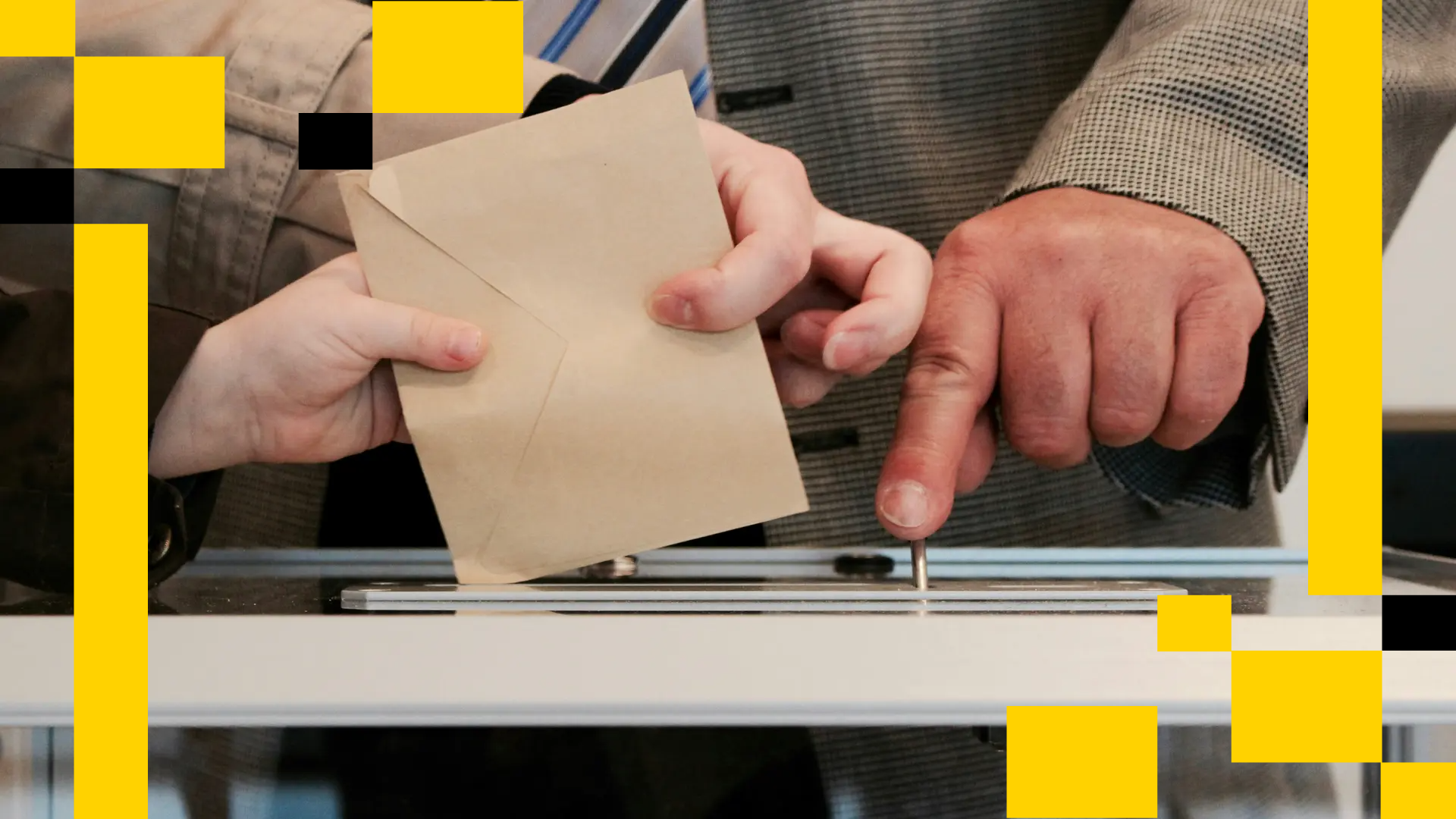Uncategorized
Crypto.com President Eric Anziani on the Exchange’s Ambitious Global Plans

Few crypto exchanges have been as busy in the last few months as Crypto.com.
The company recently received a license from MiCA to operate in the E.U., and also in December voluntarily withdrew the lawsuit it filed against the SEC after receiving a Wells notice from the agency last summer (the withdrawal happened just a day after Crypto.com CEO Kris Marszalek met with then President-elect Donald Trump at Mar-a-Lago). Not long after that meeting, the exchange announced it would re-enter the U.S. institutional exchange business after abandoning it in mid-2023 due to “limited demand.”
Crypto.com also said in January it would allow its U.S. customers to trade stocks and ETFs in addition to crypto, and acquired several brokerage firms to further build out its offerings. And Crypto.com continued to be very active on the sports naming rights front, announcing deals with Formula 1 and the UEFA Champions League to further build on its monumental $700 million deal to rename the Los Angeles Lakers’ stadium back in 2021.
This series is brought to you by Consensus Hong Kong. Come and experience the most influential event in Web3 and Digital Assets, Feb.18-20. Register today and save 15% with the code CoinDesk15.
Here, Crypto.com president Eric Anziani, who will be a speaker at Consensus Hong Kong, discusses his company’s latest plans, and the importance of Asia to Crypto.com’s future.
This interview has been condensed and lightly edited for clarity.
What are Crypto.com’s plans for the EU now that it’s received a MiCA license?
We were extremely proud to have been the first major global crypto asset service provider to receive a MiCA license, which means we can provide our market-leading range of crypto services across the EU under a streamlined and robust framework bringing a significantly improved degree of transparency to the sector.
We have always been supportive of MiCA and believe it will build trust and establish a more uniformed sentiment towards the regulation of our industry across the EU, while also safeguarding consumers and helping advance innovation. The EU is a growing and vital hub for crypto investment, and we look forward to offering more of our products and services to our millions of EU users.
What can you say about Crypto.com’s withdrawal of its lawsuit against the SEC?
We withdrew our action against the SEC given our intent to work with the incoming administration on a regulatory framework for the industry.
What are your major near- and long-term goals for Crypto.com?
We’ve got an exciting and busy year ahead as we push forward with our vision to offer users the most comprehensive platform for a broad range of financial investment services. Key to our success is our focus on product development. We released our 2025 Roadmap late last year detailing our goals and product strategy for the year ahead, most of which revolve around broadening our product and service portfolio by integrating offerings that were once confined to traditional financial services, like stocks, banking and card programs, into Crypto.com.
We also recently announced the acquisition of several brokerages such as Watchdog Capital and Orion Principals, which will allow us to expand these services even further. And we also recently launched stock and ETF trading in the U.S. We see a significant opportunity to not just continue to serve and lead the crypto market, but to be a driving force in effectively bridging traditional and digital finance.
What is Crypto.com’s latest strategy with respect to sports naming rights deals?
Our signature sports partnerships have played a pivotal role in making Crypto.com one of the most well-known and trusted brands globally. We have many long-standing sports partnerships with brands that we are honored to work with, and in the past few months we have announced the renewal of our F1 partnership until 2030, as well as becoming the first and exclusive global cryptocurrency platform partner of the UEFA Champions League.
What role do you see Asia playing in the global crypto economy?
Asia has always been a major market for us. We’re proudly headquartered in Singapore and licensed by the Monetary Authority of Singapore — a global leader in effective crypto regulation. The number of “digitally native” people in the Asia Pacific region, particularly among younger generations, is growing all the time, meaning there is an ever-growing pool of users who are supporting this growth in digital consumption and that’s only going to continue expanding and contributing to the crypto industry’s development.
There’s also a huge talent pool of young tech-savvy entrepreneurs, which is why we chose to set up our global innovation lab in Singapore, making it our designated R&D hub. The lab team is experimenting with frontier technologies and identifying novel applications for blockchain, Web3 and AI.
What are the biggest challenges to Web3’s development in Asia?
The Asia region has a complex financial demographic that includes a significant underbanked or unbanked population, alongside a digitally-savvy population with high mobile internet connectivity and smartphone penetration. So for us it’s also about how we reach those who have been historically underserved and offer them the financial tools and opportunities they need.
A lot of this expansion will come down to regulatory environments — for example places like Singapore have implemented clear, robust and innovation-friendly regulations, enabling the establishment of secure and trusted platforms. But other regional jurisdictions are still lagging behind on clear regulatory frameworks for exchanges and digital assets.
You’re deeply involved in the blockchain and start-up world in Singapore through various organizations. What are your main priorities there for 2025?
Singapore is our global headquarters, and we are very proud to be part of Singapore’s flourishing digital asset and fintech community. We work with both regulators and industry players with the aim of building an innovative and responsible Web3 ecosystem, by balancing the needs of industry for regulatory clarity and fit-for-purpose policies, as well as market integrity and consumer protection.
Going into 2025, we continue to play a leading role in supporting local players and industry associations to constructively engage with the authorities on topics such as consumer protection, scams, staking and responsible advertising through workshops, focus groups and industry papers.
Talent development is also an important focus for us. For example, we were an industry partner for GFTN (Global Financial Technology Network, formerly Elevandi, and organizer of the Singapore Fintech Festival) for their inaugural Blockchain Guardians Program in 2024. This intensive ten-week program for pre-university students aimed to develop the next generation of fintech leaders with the dual skill sets of digital asset savviness and a robust compliance mindset.
What are you most excited to discuss on stage at Consensus Hong Kong?
We go into 2025 with a really positive mindset. The industry has turned a corner in the last year, coming through the bear market and proving its resilience once again. I am looking forward to discussing all the incredible innovations and products that are going to be introduced into the digital assets space this year, what that means for cryptocurrency adoption and how we continue mainstreaming crypto and bridging financial technologies.
Is there anything else you think is important to mention?
More jurisdictions globally are focused on designing effective regulation which will further responsible innovation and enhance consumer and institutional trust in our industry. This will be vital for boosting adoption and further encouraging traditional financial institutions to engage with blockchain and digital asset technologies — an exciting trend we’re going to see a lot more of in 2025.
Uncategorized
What’s Next for Bitcoin and Ether as Downside Fears Ease Ahead of Fed Rate Cut?

Fears of a downside for bitcoin (BTC) and ether (ETH) have eased substantially, according to the latest options market data. However, the pace of the next upward move in these cryptocurrencies will largely hinge on the magnitude of the anticipated Fed rate cut scheduled for Sept. 17.
BTC’s seven-day call/put skew, which measures how implied volatility is distributed across calls versus puts expiring in a week, has recovered to nearly zero from the bearish 4% a week ago, according to data source Amberdata.
The 30- and 60-day option skews, though still slightly negative, have rebounded from last week’s lows, signaling a notable easing of downside fears. Ether’s options skew is exhibiting a similar pattern at the time of writing.
The skew shows the market’s directional bias, or the extent to which traders are more concerned about prices rising or falling. A positive skew suggests a bias towards calls or bullish option plays, while a negative reading indicates relatively higher demand for put options or downside protection.
The reset in options comes as bitcoin and ether prices see a renewed upswing in the lead-up to Wednesday’s Fed rate decision, where the central bank is widely expected to cut rates and lay the groundwork for additional easing over the coming months. BTC has gained over 4% to over $116,000 in seven days, with ether rising nearly 8% to $4,650, according to CoinDesk data.
What happens next largely depends on the size of the impending Fed rate cut. According to CME’s Fed funds futures, traders have priced in over 90% probability that the central bank will cut rates by 25 basis points (bps) to 4%-4.25%. But there is also a slight possibility of a jumbo 50 bps move.
BTC could go berserk in case the Fed delivers the surprise 50 bps move.
«A surprise 50 bps rate cut would be a massive +gamma BUY signal for ETH, SOL and BTC,» Greg Magadini, director of derivatives at Amberdata, said in an email. «Gold will go absolutely nuts as well.»
Note that the Deribit-listed SOL options already exhibit a strong bullish sentiment, with calls trading at 4-5 volatility premium to puts.
Magadini explained that if the decision comes in line with expectations for a 25 bps cut, then a continued calm «grind higher» for BTC looks likely. ETH, meanwhile, may take another week or so to retest all-time highs and convincingly trade above $5,000, he added.
Uncategorized
Asia Morning Briefing: Native Markets Wins Right to Issue USDH After Validator Vote

Good Morning, Asia. Here’s what’s making news in the markets:
Welcome to Asia Morning Briefing, a daily summary of top stories during U.S. hours and an overview of market moves and analysis. For a detailed overview of U.S. markets, see CoinDesk’s Crypto Daybook Americas.
Hyperliquid’s validator community has chosen Native Markets to issue USDH, ending a weeklong contest that drew proposals from Paxos, Frax, Sky (ex-MakerDAO), Agora, and others.
Native Markets, co-founded by former Uniswap Labs president MC Lader, researcher Anish Agnihotri, and early Hyperliquid backer Max Fiege, said it will begin rolling out USDH “within days,” according to a post by Fiege on X.
According to onchain trackers, Native Markets’ proposal took approximately 70% of validators’ votes, while Paxos took 20%, and Ethena came in at 3.2%.
The staged launch starts with capped mints and redemptions, followed by a USDH/USDC spot pair before caps are lifted.
USDH is designed to challenge Circle’s USDC, which currently dominates Hyperliquid with nearly $6 billion in deposits, or about 7.5% of its supply. USDC and other stablecoins will remain supported if they meet liquidity and HYPE staking requirements.
Most rival bidders had promised to channel stablecoin yields back to the ecosystem with Paxos via HYPE buybacks, Frax through direct user yield, and Sky with a 4.85% savings rate plus a $25 million “Genesis Star” project.
Native Markets’ pitch instead stressed credibility, trading experience, and validator alignment.
Market Movement
BTC: BTC has recently reclaimed the $115,000 level, helped by inflows into ETFs, easing U.S. inflation data, and growing expectations for interest rate cuts. Also, technical momentum is picking up, though resistance sits around $116,000, according to CoinDesk’s market insights bot.
ETH: ETH is trading above $4600. The price is being buoyed by strong ETF inflows.
Gold: Gold continues to trade near record highs as traders eye dollar weakness on expected Fed rate cuts.
Elsewhere in Crypto:
Uncategorized
BitMEX Co-Founder Arthur Hayes Sees Money Printing Extending Crypto Cycle Well Into 2026

Arthur Hayes believes the current crypto bull market has further to run, supported by global monetary trends he sees as only in their early stages.
Speaking in a recent interview with Kyle Chassé, a longtime bitcoin and Web3 entrepreneur, the BitMEX co-founder and current Maelstrom CIO argued that governments around the world are far from finished with aggressive monetary expansion.
He pointed to U.S. politics in particular, saying that President Donald Trump’s second term has not yet fully unleashed the spending programs that could arrive from mid-2026 onward. Hayes suggested that if expectations for money printing become extreme, he may consider taking partial profits, but for now he sees investors underestimating the scale of liquidity that could flow into equities and crypto.
Hayes tied his outlook to broader geopolitical shifts, including what he described as the erosion of a unipolar world order. In his view, such periods of instability tend to push policymakers toward fiscal stimulus and central bank easing as tools to keep citizens and markets calm.
He also raised the possibility of strains within Europe — even hinting that a French default could destabilize the euro — as another factor likely to accelerate global printing presses. While he acknowledged these policies eventually risk ending badly, he argued that the blow-off top of the cycle is still ahead.
Turning to bitcoin, Hayes pushed back on concerns that the asset has stalled after reaching a record $124,000 in mid-August.
He contrasted its performance with other asset classes, noting that while U.S. stocks are higher in dollar terms, they have not fully recovered relative to gold since the 2008 financial crisis. Hayes pointed out that real estate also lags when measured against gold, and only a handful of U.S. technology giants have consistently outperformed.
When measured against bitcoin, however, he believes all traditional benchmarks appear weak.
Hayes’ message was that bitcoin’s dominance becomes even clearer once assets are viewed through the lens of currency debasement.
For those frustrated that bitcoin is not posting fresh highs every week, Hayes suggested that expectations are misplaced.
In his telling, investors from the traditional world and those in crypto actually share the same premise: governments and central banks will print money whenever growth falters. Hayes says traditional finance tends to express this view by buying bonds on leverage, while crypto investors hold bitcoin as the “faster horse.”
His conclusion is that patience is essential. Hayes argued that the real edge of holding bitcoin comes from years of compounding outperformance rather than short-term speculation.
Coupled with what he sees as an inevitable wave of money creation through the rest of the decade, he believes the present crypto cycle could stretch well into 2026, far from exhausted.
-

 Business11 месяцев ago
Business11 месяцев ago3 Ways to make your business presentation more relatable
-

 Fashion11 месяцев ago
Fashion11 месяцев agoAccording to Dior Couture, this taboo fashion accessory is back
-

 Entertainment11 месяцев ago
Entertainment11 месяцев ago10 Artists who retired from music and made a comeback
-

 Entertainment11 месяцев ago
Entertainment11 месяцев ago\’Better Call Saul\’ has been renewed for a fourth season
-

 Entertainment11 месяцев ago
Entertainment11 месяцев agoNew Season 8 Walking Dead trailer flashes forward in time
-

 Business11 месяцев ago
Business11 месяцев ago15 Habits that could be hurting your business relationships
-

 Entertainment11 месяцев ago
Entertainment11 месяцев agoMeet Superman\’s grandfather in new trailer for Krypton
-

 Entertainment11 месяцев ago
Entertainment11 месяцев agoDisney\’s live-action Aladdin finally finds its stars





